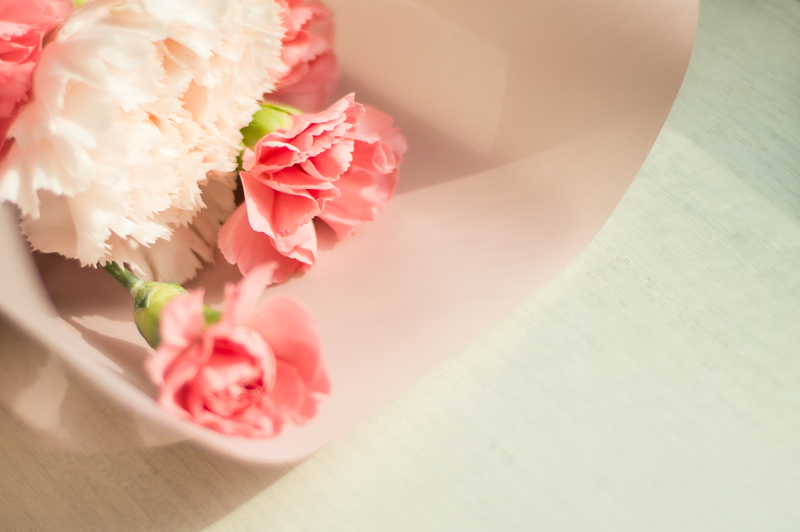Unlocking the Mysteries of Orchid Maintenance
Posted on 05/06/2025
Unlocking the Mysteries of Orchid Maintenance
Orchids are enchanting and exotic plants that have captivated gardeners and collectors alike for centuries. These botanical beauties boast a diverse range of colors, forms, and fragrances -- making them highly desirable for novices and seasoned horticulturists alike. However, the allure of the orchid is often tempered by their seemingly mysterious care requirements. In this comprehensive guide, we will unravel the secrets behind successful orchid care and provide you with actionable tips to master orchid maintenance at home.

The Fascinating World of Orchids
Orchids are one of the largest families in the plant kingdom, with over 25,000 species and more than 100,000 hybrids. Their adaptability has enabled them to flourish across nearly every continent, from lush rainforests to arid grasslands. Whether you're cultivating the elegant Phalaenopsis or the vibrant Cattleya, understanding their unique biology is the first step in unlocking effective orchid maintenance techniques.
Why Are Orchids Perceived as Difficult?
- Unique requirements: Unlike conventional houseplants, orchids have specific needs regarding light, water, humidity, and nutrients.
- Epiphytic nature: Many orchids grow on trees in the wild, which complicates their care in typical potting mixes.
- Sensitivity to changes: Orchids can react adversely to sudden shifts in their environment.
Yet, once these needs are understood, orchid care becomes less of a mystery and more of a rewarding journey.
Understanding Orchid Varieties and Their Needs
To excel at orchid maintenance, it is essential to familiarize yourself with the most common types. Let's explore the main categories and their fundamental care requirements.
1. Phalaenopsis (Moth Orchid)
- Light: Prefers moderate to bright indirect sunlight.
- Water: Water once the potting medium has dried out; once a week is typical.
- Humidity: Thrives in 50-70% humidity levels.
- Temperature: Appreciates temperatures between 65-75?F (18-24?C).
2. Cattleya
- Light: Enjoys bright but indirect light.
- Water: Allow to dry out between watering; approximately every 7-10 days.
- Humidity: Prefers 40-70% humidity.
- Temperature: Likes it a bit warmer, at 70-85?F (21-29?C).
3. Dendrobium
- Light: Needs bright light, but avoid direct harsh sun.
- Water: Water when the medium is almost dry; increase watering when actively growing.
- Humidity: Maintains health in 50-60% humidity.
- Temperature: Varies by species, but 60-90?F (16-32?C) is suitable for many.
Essential Elements of Orchid Maintenance
Unlocking the secrets of caring for orchids means focusing attention on several key aspects:
1. Light Management
Orchids are highly sensitive to light. Their requirements vary, but most thrive under bright, indirect light. Direct midday sun can scorch leaves, while too little light will hinder flowering. For indoor care, east or west-facing windows are ideal. Alternatively, fluorescent grow lights can supplement natural light, especially in winter months.
- Watch for leaf color: healthy orchid leaves should be bright green, not dark green or yellowish.
- Rotate pots regularly for uniform light exposure.
2. Proper Watering
One of the biggest challenges in orchid maintenance is watering. Overwatering is the most common mistake and can lead to root rot. Use tepid, distilled, or rainwater whenever possible. The "soak and dry" method works best: water thoroughly, then let excess moisture drain completely before watering again.
- Never let orchids sit in standing water.
- Stick your finger into the media: only water when it feels dry about an inch down.
- Reduce watering in winter or dormant stages.
3. Ideal Humidity and Air Circulation
Orchids crave humidity between 40-70%. If your home is dry, especially during winter, use a humidity tray (a shallow pan filled with pebbles and water) or a room humidifier. Good air movement is crucial; stagnant, damp air encourages mold and pests. Place a fan nearby on a gentle setting or open windows for fresh air when weather permits.
4. The Right Potting Medium
Unlike standard houseplants, orchids need a potting medium that allows roots to breathe. Typical choices include:
- Bark chips: Excellent drainage and aeration.
- Sphagnum moss: Retains moisture, ideal for young or stressed plants.
- Coconut husk and perlite: Often blended with bark for customized mixtures.
Repot every 1-2 years or when the medium breaks down, using a container with ample drainage holes.
5. Fertilizer: Feeding Your Orchid
For healthy growth and prolific blooms, regular feeding is essential. Use a balanced, water-soluble fertilizer (20-20-20) diluted to half or quarter strength. Feed every 2-4 weeks during active growth (spring and summer), and reduce in autumn and winter.
- Flush pots with plain water monthly to prevent fertilizer salt buildup.
- "Weakly, weekly" is a popular feeding mantra among orchid enthusiasts.
Common Orchid Maintenance Issues and Solutions
Even with proper attention, problems can arise during your orchid care journey. Spotting signs of trouble early can make all the difference:
Yellowing Leaves
- Possible causes: Overwatering, poor drainage, excessive light, or natural leaf aging.
- Solution: Inspect root health, adjust light levels, ensure proper watering routines.
Limp or Wrinkled Leaves
- Possible causes: Underwatering, root damage, low humidity.
- Solution: Check moisture levels, repot and trim damaged roots, increase humidity.
Failure to Bloom
- Possible causes: Insufficient light, incorrect temperature cycling, or lack of nutrients.
- Solution: Relocate to brighter spot, ensure temperature drops 10?F at night, fertilize appropriately.
Pest Infestation
- Common pests: Spider mites, aphids, scale insects, and mealybugs.
- Solution: Isolate affected plants, use rubbing alcohol-soaked cotton swabs for spot treatment, and consider insecticidal soap for severe cases.
Special Orchid Maintenance Tips for Blooming Success
Helping your orchid rebloom is the pinnacle of successful orchid care. These top tips can make it easier:
1. Temperature Triggers
Many orchids, especially Phalaenopsis, require a distinct night-time temperature drop (about 10?F lower than day) to initiate flower spikes. Gradually decrease temperature in the autumn to stimulate this response.
2. Pruning and Flower Spike Care
- After blooms fade, prune just above a visible node on the old spike to encourage secondary blooms.
- If the spike turns brown, cut it back to the base to conserve plant energy.
3. Support and Staking
Use stakes and soft ties to support heavy flower spikes and prevent breakage.
4. Cleanliness Counts
Sterilize all cutting tools and pots before use. Good sanitation reduces the risk of fungal and bacterial infections -- both of which can spell disaster for your orchid collection.
Repotting: When and How to Do It
Repotting is a vital part of orchid maintenance. Here's when and how to do it right:
When to Repot
- The potting medium breaks down and no longer drains well.
- Roots overflow from the pot or appear shriveled and brown.
- Mold or pest issues emerge at the base.
- Every 1-2 years, or after blooming periods.
Steps for Successful Repotting
- Water the orchid a day before to ease root removal.
- Gently remove the orchid from its old pot, untangling roots.
- Trim damaged roots with sterilized scissors.
- Place in fresh orchid mix, ensuring roots have room to breathe.
- Water lightly and keep in shaded area for recovery.
Year-Round Orchid Care Calendar
Sticking to a seasonal care schedule helps ensure thriving, blooming orchids:
- Winter: Reduce watering and fertilizer; ensure sufficient light with grow lamps. Watch for cold drafts.
- Spring: Resume regular watering, increase feeding. Start repotting when new growth appears.
- Summer: Increase humidity, provide good air circulation. Check regularly for pests.
- Autumn: Trigger blooming by reducing temperature, trim faded spikes, clean foliage and surfaces.
Orchid Maintenance Myths Debunked
Myths abound regarding orchid care. Let's address the most persistent:
- Myth: Orchids must be watered with ice cubes.
Fact: Ice cubes can cause temperature shock. Use room-temperature water instead! - Myth: Orchids are short-lived houseplants.
Fact: With proper care, orchids can live and bloom for decades. - Myth: All orchids need the same care.
Fact: Requirements can vary significantly between species and hybrids.

Expanding Your Orchid Collection
Once you've mastered the basics of orchid care and maintenance, the next step is expanding your collection. Try experimenting with different genera and hybrids to discover what suits your growing environment best. Always source plants from reputable growers to ensure disease-free, robust specimens. Community orchid societies and online forums are wonderful resources for networking and learning more advanced tricks of the trade.
Conclusion: The Joy of Orchid Maintenance
Unlocking the mysteries of orchid maintenance is truly within reach for anyone ready to learn and experiment. By understanding their natural habitat, providing the right environment, and monitoring their needs, you can enjoy vibrant blooms year after year. Whether your goals are a single, spectacular windowsill orchid or a thriving collection, following these expert orchid care tips will ensure your orchids reward you with unparalleled beauty and satisfaction. Happy growing!

